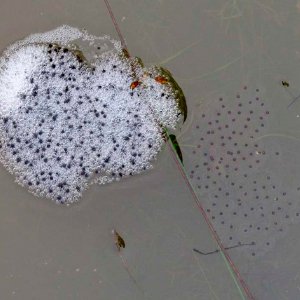OUR region is heaven for frogs, with over 30 different species making their homes among our local environments. Sadly, frog populations are in decline.
Locally, cane toads are often blamed for this; but the main factor responsible within our backyards is a loss of suitable habitat.
Researchers have found that a serious fungal disease called chytrid fungus may also be responsible for the loss of many frogs in the wild. But there is a light at the end of the tunnel and a lot that we can all do to help bring back the frogs into our backyards.
Creating a frog-friendly garden
Frogs require environments in which the adults can breed, the tadpoles can develop, and the young can mature. By creating suitable habitats in your garden, you can encourage thriving populations of frogs and other wildlife.
The most important factor in making a garden frog-friendly is creating a complex ‘bush-like’ setting. This will have a variety of ground covers, grasses, shrubs and small to large trees, offering protection from wind and sun, and providing food for insects, which in turn feed the frogs.
With very few exceptions, frogs must visit water to breed. A permanent pond, with well-vegetated landscaped banks, can be both visually appealing and attractive to frogs. Take care, as a pond can also be a drowning risk. Contact council to check what requirements are necessary before you build a pond.
A potential mosquito problem can be avoided by using native pacific blue-eye fish. A good pet shop will be able to help you out.
Don’t use ‘mosquito fish’. They are actually called gambusia and are an introduced pest which eats native fish and tadpoles – but not many mosquitoes.
Tadpoles feed on algae and other organic matter in the water. A typical outdoor pond environment will normally offer all the nourishment they need, so adding extra food is usually unnecessary.
Provide perches so the newly developed frogs can leave the water. Floating waterlily leaves and protruding branches are ideal.
Discourage cane toads, eliminating them from your garden will do the frogs and other wildlife a favour. Densely vegetated pond edges will discourage cane toads from getting to the water. Remember, many frogs aren’t green, so make sure you identify the right ‘toad’ if you’re toad-busting.
Important things to avoid
Don’t move frogs or tadpoles from one area to another, as the deadly chytrid fungal disease is easily spread. Unnecessary relocations of frogs can speed the spread of this fungus and wipe out whole populations. If you have the right garden conditions, the frogs will come. When the environmental conditions are wrong, nothing you can do will keep the frogs in, but if the conditions are right nothing will keep them out.
Avoid raising cane toads. Toads lay their eggs in long jelly strings, whereas most frogs in the backyard lay eggs in foam. Toad tadpoles – or ‘toadpoles’ – are small and uniformly black or very dark grey in colour and the native species have pale or translucent bellies. Toadpoles also swarm together in large masses.

The council have a really good information page on frogs, with loads of photos to help you identify the native frogs in your area, and great information of frog-friendly gardens… including how to turn your pool into a frog paradise.
Check it out from this shortened link https://cutt.ly/2PYgsNs
Main image: Striped Marsh frog